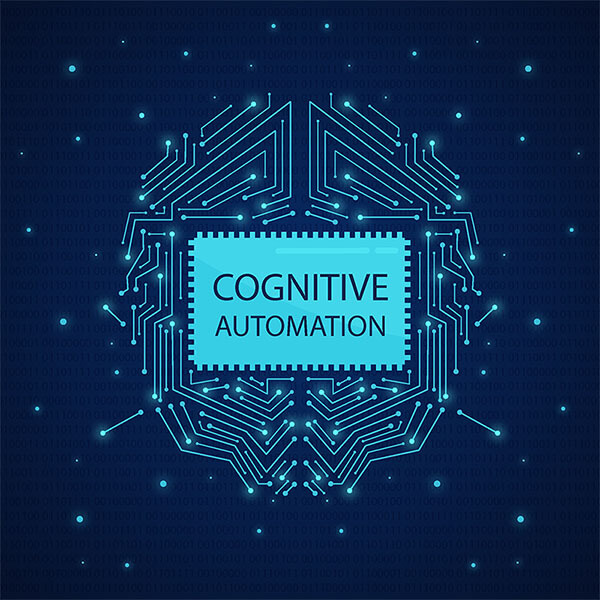Cognitive Automation Is Also RPA But Better
RPA, Stories, Tech, Tips, Trends
0
The first stepping stone into the technological revolution for many enterprises worldwide is integrating Robotic Process Automation (RPA) tools to their business processes. So far, RPA is being implemented widely across businesses to automate manual, high-volume, rules-based, and repeatable human tasks.
In its third annual survey, Deloitte reported that organizations who have already implemented RPA achieve significant benefits across multiple dimensions including improved compliance to 92%, improved quality and accuracy to 90%, improved productivity to 86%, and cost reduction of up to 59%.
While RPA continues to meet and exceed expectations, the advent of Artificial Intelligence (AI) and related new cognitive technologies takes automation to a higher level. This convergence of technologies produces automation capabilities that can dramatically elevate business value and boost competitive advantages.
In June 2019, IDC reported that the highest spend within the AI space would be on cognitive applications, predicting that global corporate spending on cognitive and AI systems will grow into a $11.8 billion in revenue by 2023.
Given the surprisingly impressive potential for growth in the next couple of years, cognitive applications are poised to become one of the most widespread and fastest growing emerging technologies in the recent time. This also shows a trend in using cognitive technologies in conjunction with RPA.
Let’s take a closer look at what exactly cognitive automation is and how it pushes traditional RPA to reach beyond its limits.
Deloitte defines cognitive automation as a subset of AI that mimics human behavior.
“RPA together with cognitive technologies such as speech recognition and natural language processing automate perceptual and judgment-based tasks once reserved for humans.”
“In an artificial intelligence system, the system tells a doctor which course of action to take based on its analysis. In cognitive computing, the system provides information to help the doctor decide.”
With that, cognitive automation in refers to AI techniques that mimic the way how human brain works and that are applied to automating specific business processes to assist humans in making decisions, completing tasks, and meeting goals.
Now let’s examine the differences between these two technologies.
In terms of application, RPA uses software robots to mimic human tasks that do not require decision-making such as transferring elements from one spreadsheet to another through a copy-paste routine. However, there are plenty of situations that require human interventions especially when they involve managing big data. This is where cognitive automation comes to play. Taking the aforementioned case, doctors leverage cognitive automation with AI techniques to analyze a patient’s condition to determine a diagnosis.
RPA and cognitive automation also differ in technology. RPA relies on basic technologies such as screen scraping, macro scripts and workflow automation. On the contrary, Cognitive automation uses more advanced technologies such as natural language processing (NLP), machine learning, image analysis, speech recognition, computer vision, and predictive analytics to make it easier for the human workforce to make informed decisions.
Another key difference lies in their automation methods. RPA deploys process-oriented bots which work on time-consuming tasks that were previously performed by offshore teams. Cognitive automation operates on a knowledge-based technology where machine analyzes human behaviors to define its own rules.
Moreover, RPA and cognitive automation process data distinctively. RPA works with standardized, structured, or semi-structured data such as spreadsheets and databases. On that premise, cognitive automation is required to determine relationships between unstructured data or entities e-mails, invoices, images, etc.
Simply put, robots can only perform tasks based on clear-cut rules. This means complex processes that require human judgement cannot be automated through RPA alone. This is why some enterprises consider RPA bots to work alongside people, taking on relatively simple activities so that people can focus on more complex exceptions.
The integration of cognitive technologies with RPA enhances basic automation and extends the scope of automation possibilities. Cognitive automation paves the way for an “augmented workforce” in which humans and technology work together in harmony to produce more relevant and critical output.
Get your free Robotic Process Automation (RPA) Software: Download here





